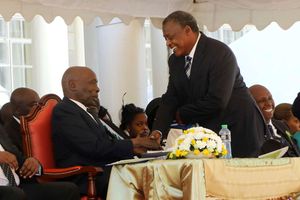Premium
End of Imperial Bank as CBK okays winding up

Imperial Bank's branch in Likoni, Mombasa County in this picture taken on October 14, 2015.
What you need to know:
- The Bank has been under receivership for almost five years, a period during which most of the money has been used to pay depositors.
- CBK says 92 per cent of savers have received their total cash from their bank leaving 4,300 depositors.
The Central Bank of Kenya has ordered the liquidation of collapsed Imperial bank, setting stage for the sale of the lender’s remaining assets to be distributed among 4,300 depositors, creditors and bondholders.
Imperial Bank collapsed six years ago with depositors cash, bondholders investments and creditors money and has been under receivership of the Kenya Deposit Insurance Corporation (KDIC).
During the six years, most of the money has been used to pay depositors including the sale of Sh3.2 billion assets and liabilities to KCB Bank last year.
CBK says 92 per cent of savers have received their total cash from their bank leaving 4,300 depositors who are yet to receive their full cash. The apex bank said KDIC will now proceed with liquidating the bank and processing payment for the remaining depositors and creditors.
“Following four payment disbursements, 45,700 out of the 50,000 (92 percent) depositors have accessed their funds in full,” CBK Governor Dr Patrick Njoroge (below) said.
“KDIC will release information about the liquidation of IBLIR and payment of depositors in due course.”
Imperial Bank has been under receivership for almost five years leaving a tale of woe by depositors who lost money to run their businesses, pay school fees and some who died because they could not raise money for medical attention.





